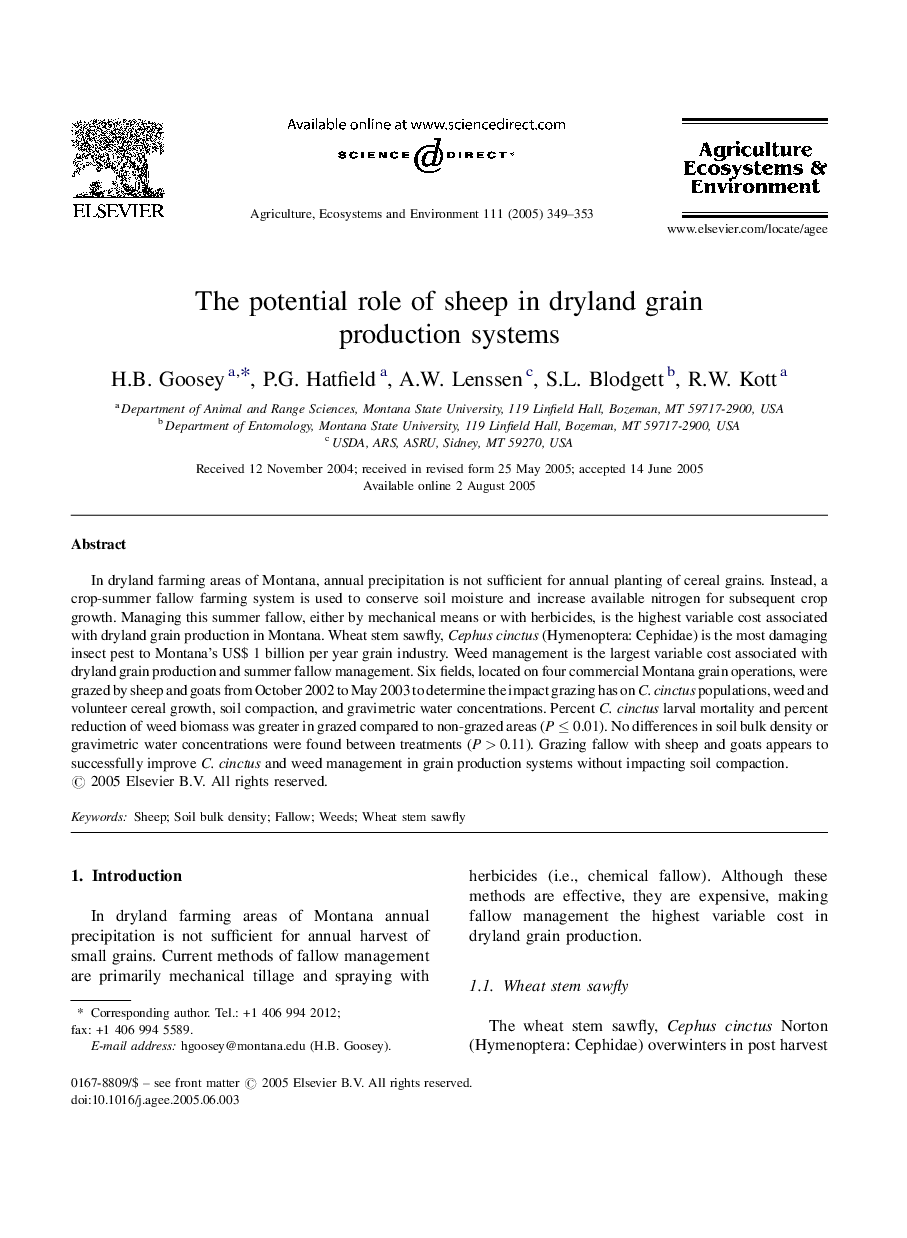| کد مقاله | کد نشریه | سال انتشار | مقاله انگلیسی | نسخه تمام متن |
|---|---|---|---|---|
| 8970741 | 1552152 | 2005 | 5 صفحه PDF | دانلود رایگان |
عنوان انگلیسی مقاله ISI
The potential role of sheep in dryland grain production systems
دانلود مقاله + سفارش ترجمه
دانلود مقاله ISI انگلیسی
رایگان برای ایرانیان
موضوعات مرتبط
علوم زیستی و بیوفناوری
علوم کشاورزی و بیولوژیک
علوم زراعت و اصلاح نباتات
پیش نمایش صفحه اول مقاله

چکیده انگلیسی
In dryland farming areas of Montana, annual precipitation is not sufficient for annual planting of cereal grains. Instead, a crop-summer fallow farming system is used to conserve soil moisture and increase available nitrogen for subsequent crop growth. Managing this summer fallow, either by mechanical means or with herbicides, is the highest variable cost associated with dryland grain production in Montana. Wheat stem sawfly, Cephus cinctus (Hymenoptera: Cephidae) is the most damaging insect pest to Montana's US$ 1 billion per year grain industry. Weed management is the largest variable cost associated with dryland grain production and summer fallow management. Six fields, located on four commercial Montana grain operations, were grazed by sheep and goats from October 2002 to May 2003 to determine the impact grazing has on C. cinctus populations, weed and volunteer cereal growth, soil compaction, and gravimetric water concentrations. Percent C. cinctus larval mortality and percent reduction of weed biomass was greater in grazed compared to non-grazed areas (P â¤Â 0.01). No differences in soil bulk density or gravimetric water concentrations were found between treatments (P > 0.11). Grazing fallow with sheep and goats appears to successfully improve C. cinctus and weed management in grain production systems without impacting soil compaction.
ناشر
Database: Elsevier - ScienceDirect (ساینس دایرکت)
Journal: Agriculture, Ecosystems & Environment - Volume 111, Issues 1â4, 1 December 2005, Pages 349-353
Journal: Agriculture, Ecosystems & Environment - Volume 111, Issues 1â4, 1 December 2005, Pages 349-353
نویسندگان
H.B. Goosey, P.G. Hatfield, A.W. Lenssen, S.L. Blodgett, R.W. Kott,